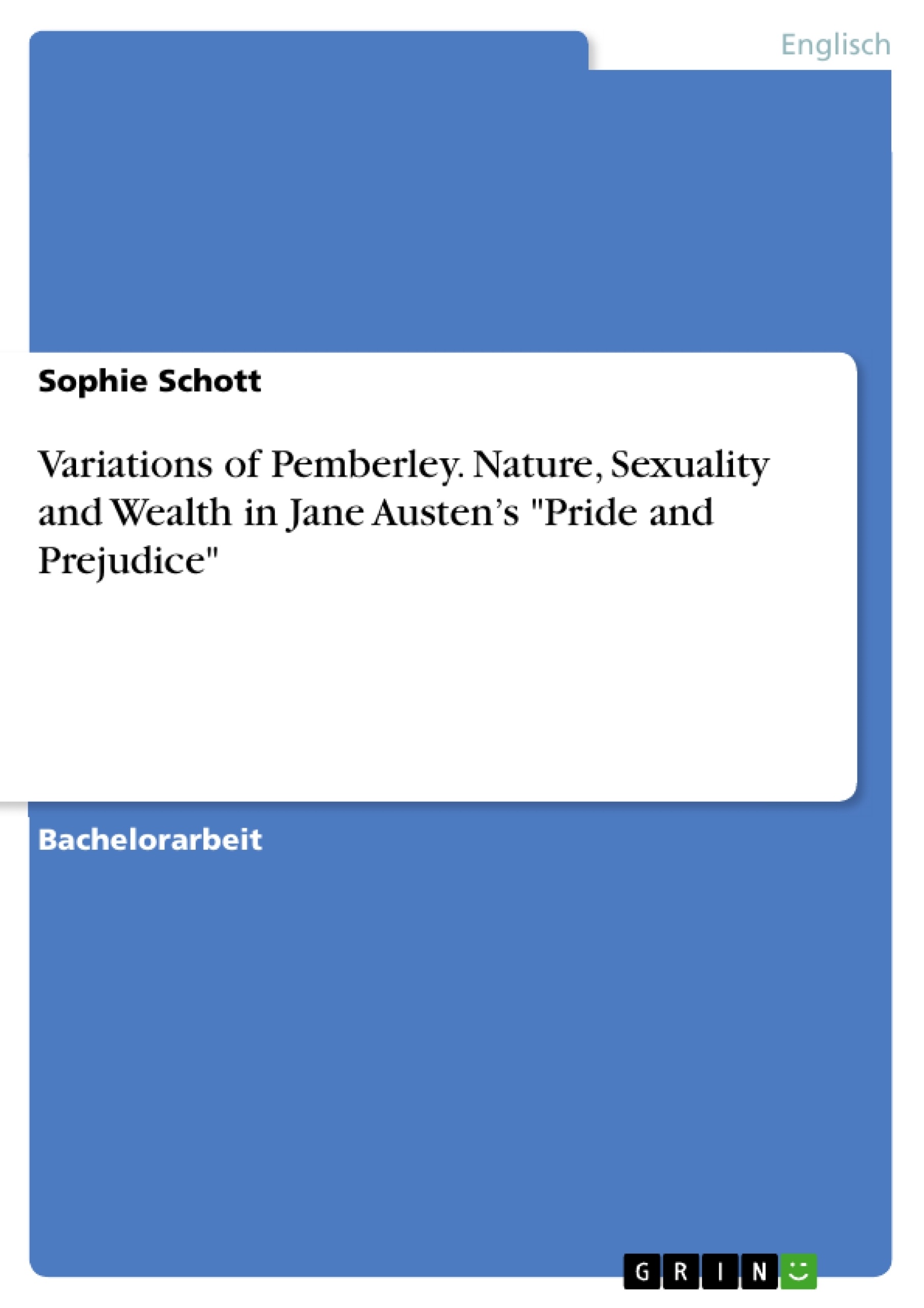A precise analysis between a novel’s transmission of a story and a film’s depiction can be achieved by including adaptation theory and comparing a novel to its audio-visual interpretations. The most-adapted author of the nineteenth century is Jane Austen with her well-known British classic novel Pride and Prejudice as “one of the most adapted of all novels". It was first published in 1813 and has been adapted both closely and loosely into television series, motion picture films, radio plays, theatre performances and other novels. The existing adaptations convey the story in various ways, for example setting it in Austen’s time or transferring it to modern times.
Pride and Prejudice begins with the announcement of a young, affluent single man called Charles Bingley who moves to Netherfield Park. Mrs Bennet, the mother of Jane, Elizabeth, Mary, Kitty and Lydia, and who lives in a nearby village called Longbourn, hopes for a marriage between the man and one of her five daughters. After several social events, the sisters not only get to know Bingley, who is attracted to Jane, but also to his friend Darcy. He, who also is an affluent bachelor, is introduced as a proud and disagreeable man after acting haughty due to his higher social standing and refusing to dance with Elizabeth at a ball. [...]
Inhaltsverzeichnis
- 1 Introduction
- 2 Adaptation Theory
- 2.1 Categories of Adaptation
- 2.2 Interrelation between Narrative and Audio-visual Adaptation
- 2.3 Film Theory for the Analysis of Audio-visual Adaptations
- 3 The Representation of ‘Pemberley' in Pride and Prejudice and Adaptations
- 3.1 Representation of Nature
- 3.2 Representation of Sexuality
- 3.3 Representation of Wealth
- 4. Conclusion
- 5. Works Cited
Zielsetzung und Themenschwerpunkte
Diese Arbeit untersucht die Darstellung von Pemberley in Jane Austens Roman "Pride and Prejudice" und in drei seiner audiovisuellen Adaptionen. Die Arbeit analysiert die verschiedenen Repräsentationen von Natur, Sexualität und Reichtum in den verschiedenen Medien und untersucht, wie diese Elemente zur Charakterentwicklung und zum Verständnis der Romanhandlung beitragen.
- Darstellung von Pemberley in "Pride and Prejudice" und in den Adaptionen
- Die Bedeutung von Natur, Sexualität und Reichtum für die Romanhandlung
- Vergleich der Adaptionen in Bezug auf ihre Interpretation von Pemberley
- Die Rolle von Pemberley als Symbol für soziale und wirtschaftliche Macht
- Der Einfluss der Adaptionen auf die Wahrnehmung des Romans
Zusammenfassung der Kapitel
Das erste Kapitel bietet eine Einleitung in das Thema und stellt die wichtigsten Begriffsdefinitionen für die Analyse von Adaptionen vor. Das zweite Kapitel untersucht die Darstellung von Pemberley in Jane Austens Roman "Pride and Prejudice" und analysiert die Bedeutung von Natur, Sexualität und Reichtum für die Romanhandlung. Die folgenden Kapitel analysieren drei ausgewählte Adaptionen des Romans: die BBC-Miniserie "Pride and Prejudice" (1995), den Film "Pride & Prejudice" (2005) und den Film "Bridget Jones's Diary" (2001). Die Arbeit untersucht, wie die drei Adaptionen die Darstellung von Pemberley und die damit verbundenen Themen verändern.
Schlüsselwörter
Die Arbeit konzentriert sich auf die Analyse der Themen Natur, Sexualität und Reichtum in Jane Austens Roman "Pride and Prejudice" und seinen Adaptionen. Weitere wichtige Begriffe sind Pemberley, Adaptionstheorie, Filmtheorie, audiovisuelle Adaptionen und die verschiedenen Kategorien von Adaptionen. Die Arbeit stellt zudem die unterschiedlichen Interpretationen von Pemberley in den verschiedenen Medien dar und zeigt, wie die Adaptionen die Wahrnehmung des Romans beeinflussen.
- Quote paper
- Sophie Schott (Author), 2017, Variations of Pemberley. Nature, Sexuality and Wealth in Jane Austen’s "Pride and Prejudice", Munich, GRIN Verlag, https://www.grin.com/document/385773



